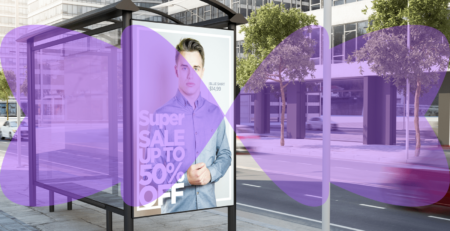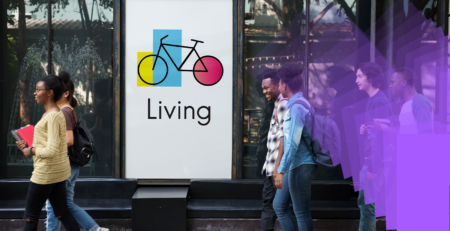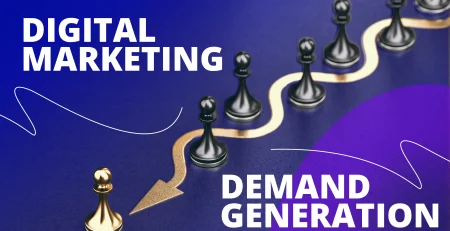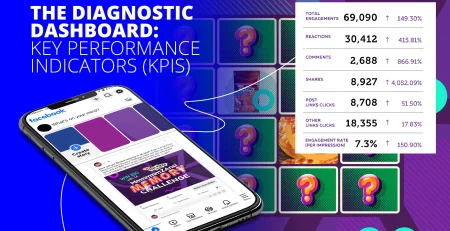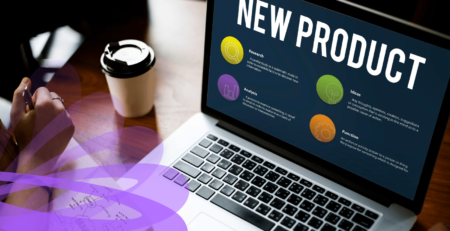How Can You Maximize Reach with Creative Hashtags on Social Media?
Brand Awareness vs Brand Recognition: The Strategic Framework for Building Landmark Brands
The Art & Algorithm
A Strategic Guide to Maximizing Reach with Hashtags
The Evolution of the Hashtag
Indexing Tool
Started as a simple way to categorize conversations and content.
Social SEO Signal
Evolved to help algorithms understand content and user search intent.
Community Catalyst
Now a powerful tool for uniting users and building brand communities.
The Strategic Hashtag Mix
A successful strategy combines different hashtag types in a single post to achieve multiple goals. Aim for a balanced portfolio to maximize both reach and relevance.
#YourBrandName
#ContestOrLaunch
#SpecificInterest
#Marketing
#NYCFoodie
#Conference2025
#MotivationMonday
#PlantParenthood
Platform Playbook: At a Glance
Focus on SEO-driven curation and community discovery.
Optimal Count: 3-5 in caption, 15-20 in first comment.
Placement: Caption for SEO, comments for discovery.
Strategy: Use a mix of niche and broad tags. Research tags with 10k-200k posts.
TikTok
Fuel the algorithm and ride the wave of trends.
Optimal Count: 3-5
Placement: Caption only.
Strategy: Combine 1-2 trending tags with 2-3 niche/community tags relevant to your video.
X (Twitter)
Join real-time conversations and trending topics.
Optimal Count: 1-2
Placement: End of tweet or integrated naturally.
Strategy: Less is more. More than 2 tags can decrease engagement. Monitor trends.
Index for professional discovery and thought leadership.
Optimal Count: 3-5
Placement: End of post.
Strategy: Use a mix of broad industry tags and niche professional tags. Use #PascalCase.
Crafting Great Hashtags
- Short & Memorable: Easy to remember, spell, and type. Aim for 3 words max.
- Unique & Original: Search before use to avoid negative connotations or existing campaigns.
- Relevant & Specific: Clearly relates to your brand, campaign, or content.
- Readable & Accessible: Use #CamelCase or #PascalCase for multi-word tags to improve readability.
Measure What Matters
Unique Users
Total Views
Likes, Shares
vs. Competitors
Positive/Negative
Clicks, Sales
Infographic by Trace Brand Building.
Your competitors dominate social feeds while your content barely registers a pulse. Despite investing in quality creative and consistent posting, engagement rates refuse to budge. The culprit? A hashtag strategy that treats these powerful tools as decorative afterthoughts rather than strategic brand assets.
Most marketing teams sprinkle generic hashtags across posts like digital confetti, hoping something catches the algorithm’s attention. This approach drains budgets, exhausts creative teams, and leaves brands invisible in crowded feeds. When hashtags lack strategic purpose and precision, even brilliant content drowns in digital noise.
At Trace Brand Building, our creative agency in Denver, we’ve guided countless brands through this exact transformation. This comprehensive guide reveals how strategic hashtag implementation transforms your social media presence from overlooked to unmistakable, turning passive scrollers into engaged brand advocates.
From Indexing Tool to Strategic Brand Asset
The hashtag’s journey began in 2007 on Twitter as a simple categorization tool for following conversations about specific topics, such as the San Diego fires. What started as user-generated innovation has evolved into a sophisticated brand asset capable of shaping perception, fostering community, and influencing algorithmic discovery.
Today’s hashtags transcend their utilitarian origins. They actively shape brand narratives, cultivate dedicated communities, and enhance what we call “social search engine optimization.” This evolution aligns perfectly with our philosophy at Trace Brand Building that brand identity should ignite discussions, not just attract attention.
Creative hashtags act as invitations for engagement, transforming one-way brand messages into two-way dialogues. They empower consumers to become co-creators of your brand story, building the kind of authentic connections that drive lasting brand equity.
The Algorithm’s New Language
Platform algorithms have evolved beyond simple metadata analysis. They now employ sophisticated AI and natural language processing to prioritize content based on quality, user engagement, and contextual relevance. Within this advanced ecosystem, hashtags serve as precise signals that inform discovery engines on platforms like Instagram and Facebook.
According to Instagram’s head Adam Mosseri, while hashtags may not directly boost reach in traditional ways, they’re crucial for helping content appear in search results. This distinction matters: hashtags function as the keywords of social media, providing necessary data for algorithms to categorize content and serve it to users actively seeking it.
A well-chosen hashtag functions as an “algorithmic handshake,” signaling to the platform that content belongs to a specific community and serves a particular search intent. This nuanced interaction goes beyond simple discoverability. It tells the algorithm that the content holds high quality and relevance for specific user groups, increasing recommendations to similar users even without direct hashtag following.
The Community Catalyst: Fostering Belonging Through Strategic Tagging
Beyond technical function, hashtags serve as digital rallying points, uniting users around shared interests, values, events, and brand identities. By creating or participating in hashtag-driven conversations, brands foster genuine belonging and collective experience.
This dynamic forms the foundation of User-Generated Content (UGC) campaigns, where branded hashtags become central hubs for community storytelling. Customers transform into your most authentic brand advocates, sharing their stories, photos, and videos. This strategic shift from “broadcasting” to “narrowcasting” explains why massive hashtags, such as #love, prove less effective than focused, community-driven tags. Broadcasting attempts to reach everyone with generic messages, while narrowcasting reaches the right people with relevant content.
Building Your Strategic Hashtag Mix
A sophisticated hashtag strategy requires a carefully constructed portfolio of different hashtag types, each serving distinct purposes. We refer to this as the “Strategic Hashtag Mix”: a balanced combination designed to achieve multiple marketing objectives simultaneously.
Essential Hashtag Categories
Branded Hashtags: Unique to your company, these serve as digital archives for all brand-related content. They’re indispensable for tracking brand mentions and aggregating user-generated content. Calvin Klein’s #MyCalvins exemplifies this approach perfectly. The risk? Low initial adoption requires consistent promotion to gain traction.
Campaign Hashtags: Time-bound tags created for specific marketing initiatives centralize conversation around particular campaigns, making participation tracking and success measurement easy. Lay’s #DoUsAFlavor demonstrates the power of campaign-specific tagging, though these tags become irrelevant after campaign conclusion.
Community and Niche Hashtags: These connect like-minded users around specific interests, crucial for reaching highly targeted and engaged audiences. Tags like #BookTok for literature enthusiasts or #PlantParenthood for houseplant lovers build authentic community connections. Data suggests the “sweet spot” for hashtag volume falls between 10,000 and 200,000 posts. This indicates an active community while avoiding noise drowning.
Broad/Industry Hashtags: High-volume general terms provide algorithmic context, though their high competition level means limited targeted reach. Terms like #travel or #food appear in hundreds of millions, even billions of posts. Using them offers theoretical massive visibility, but new posts get instantly buried. This resembles shouting into a hurricane: huge potential audience, infinitesimal hearing chances.
Location Hashtags: Essential for brick-and-mortar businesses and local targeting, ranging from broad (#ExploreCalifornia) to highly specific (#DowntownDenver). As a Denver creative agency, we understand the power of local hashtag strategies for connecting with regional audiences and driving foot traffic.
Event Hashtags: Used to centralize conversations during conferences, trade shows, or virtual events. Tags like #WWDC for Apple’s developer conference allow attendees and remote followers to connect in real-time, though usage plummets immediately after event conclusion.
Daily/Evergreen Hashtags: Recurring tags tied to specific days or themes (#MotivationMonday, #ThrowbackThursday) provide consistent content opportunities but can appear generic without high-quality content.
The Optimal Mix Formula
For a typical brand post on Instagram, we recommend: 1 Branded Hashtag + 2-3 Niche/Community Hashtags + 1-2 Broad/Industry Hashtags + 1 Location Hashtag (if applicable). This structure simultaneously reinforces brand salience, connects with passionate core audiences, provides general algorithmic context, and attracts local interest.
The mix should adapt dynamically based on specific content pillars and platforms. Contest promotions feature campaign hashtags prominently, while company culture posts lean on branded and industry tags. Think of your hashtag set like an investment portfolio. Broad hashtags are high-risk, high-reward assets that have the potential to go viral but are likely to yield little return. Niche hashtags provide consistent, predictable engagement from core audiences. Branded hashtags build long-term equity. Balance this portfolio based on campaign goals.
Platform-Specific Strategy Matrix
Understanding each platform’s unique requirements proves critical for hashtag success. Here’s your comprehensive 2025 guide:
| Platform | Optimal Count | Placement | Primary Function | Algorithm Consideration | Common Pitfall |
| 3-5 in caption, 15-20 in 1st comment | Caption (for SEO), First Comment (for discovery) | SEO, Content Categorization, Community Discovery | Prioritizes hashtags in caption for search results | Using only broad, high-volume tags; hashtag stuffing | |
| TikTok | 3-5 | Caption Only | Algorithmic Sorting, Trend Participation, Niche Community ID | Heavily relies on hashtags to categorize content for FYP | Using irrelevant hashtags; placing tags in comments |
| X (Twitter) | 1-2 | End of tweet or integrated naturally | Real-Time Conversation, Event Tracking, Trending Topics | Favors timeliness and relevance to current trends | Using more than two hashtags, which reduces engagement |
| 3-5 | End of Post | Professional Discovery, Thought Leadership, Industry Networking | Users actively follow hashtags to curate their feeds | Using unprofessional or overly casual hashtags | |
| 1-3 | End of post or integrated naturally | Algorithmic Context, Topic Signaling | Limited public discovery due to privacy settings | Overloading posts with hashtags, which harms reach | |
| YouTube | 2-3 | Video Description | Video SEO, Content Categorization, Search Discoverability | Aligns with video tags and keywords to improve search ranking | Using tags unrelated to video’s core topic |
This matrix synthesizes platform-specific data points into an easy-reference strategic planning guide. Notice how each platform’s culture and algorithm demands distinct approaches. What works on Instagram fails on X.
Instagram: The Art of SEO-Driven Curation
Instagram’s official guidance suggests using just 3-5 hashtags per post, focusing on highly relevant signals for algorithm categorization. However, multiple data studies analyzing millions of posts show reach and engagement rates often peak with 20-30 hashtags.
Our recommended 2025 strategy: Use 3-5 highly relevant, keyword-focused hashtags directly within the caption for search functionality. These critical tags signal clear intent to the algorithm and ensure posts appear in search results. Add 15-20 additional hashtags in the first comment, mixing niche, community, and relevant tags for broader discovery without cluttering the caption.
Caption vs. Comments: While hashtags function for discovery in either location, placing them in the caption proves essential for Instagram’s search functionality. For accounts under 100,000 followers, caption placement provides up to 36% reach boost. Larger accounts (over 100,000 followers) may gain slight reach advantage by placing hashtags in comments while maintaining cleaner caption aesthetics.
Best Practices:
- Research hashtags with 10,000-200,000 post volume using Instagram’s search bar or tools like Inflact and Flick
- Avoid banned or “shadowbanned” tags by searching before use. If no results appear, the tag harms visibility
- Create several curated hashtag lists for different content pillars and rotate them in a “hashtag cycle” to avoid algorithmic penalties
- Never use the exact same hashtag block repeatedly, as algorithms flag this as spammy behavior
TikTok: Riding the Wave of Trends
On TikTok, hashtags fuel the algorithm, categorizing videos for the correct “For You” Page. Use 3-5 highly relevant hashtags exclusively in video captions. Comments don’t influence algorithmic discovery.
Strategic mix:
- 1-2 Broad/Trending Tags (#fyp, #foryoupage, current viral trends) offering massive exposure chances but high competition
- 2-3 Niche/Community Tags (#BookTok, #CleanTok, #IndieGameDev) critical for targeted, engaged audiences
- 1-2 Content-Specific Tags (#unboxing, #makeuptutorial, #LondonVlog) describing literal video content
TikTok’s sophisticated algorithm penalizes irrelevant hashtag use. Placing #CarDetailing on a baking video confuses the system and reduces reach. The TikTok Creative Center provides invaluable data on hashtag velocity (growth speed), often more important than total size. Branded hashtag challenges like #ChipotleLidFlip demonstrate exceptional effectiveness on this platform, driving viral engagement through simple, participatory formats.
X (formerly Twitter): Real-Time Conversation Hub
Hashtag strategy on X differs fundamentally from visual platforms, focusing on immediate, real-time conversations rather than evergreen content discovery.
Data-driven approach: Tweets with one to two relevant hashtags receive 21% higher engagement than those with three or more. Using more than two hashtags results in 17% engagement drop. For paid advertisements on X, posts without hashtags or mentions generate 23% more clicks. Use one to two hashtags for organic posts, none for paid.
Keep hashtags under 11 characters for better performance. Monitor the “Explore” tab to identify trending topics where your brand can add genuine value. Joining trends just for visibility without a relevant contribution appears spammy.
LinkedIn: The Professional Index
LinkedIn’s algorithm values hashtags highly for content discovery and professional networking. Professionals actively follow industry-specific hashtags to curate news feeds, making tags key channels for reaching relevant audiences.
Optimal strategy: Use three to five relevant hashtags at post endings to maintain readability and professionalism. Combine broad industry tags like #DigitalMarketing (26+ million followers) with niche professional tags (#B2BSalesAutomation) to balance reach with relevance.
Use Pascal Case for readability and accessibility (#FutureOfWork, not #futureofwork). Screen readers pronounce each word correctly with proper capitalization. Branded hashtags effectively build thought leadership through personal hashtag series and employer branding initiatives (#LifeAtGoogle).
Facebook and YouTube: Supporting Roles
Facebook: Hashtags remain functional but not central to discovery. Private profile prevalence limits public reach. Posts with one hashtag see highest average engagement, with sharp performance drops beyond three. Use 1-3 focused hashtags to provide algorithmic context, sometimes integrated naturally within post copy.
YouTube: Hashtags serve as useful video SEO tools. Use 2-3 relevant hashtags in video descriptions, aligning closely with main keywords and tags. These help YouTube’s algorithm understand and categorize videos, increasing search results and suggested feed appearances.
Creative Brainstorming: Crafting Memorable Hashtags
Before brainstorming begins, define the strategic objective explicitly. What specific action or emotion should this hashtag evoke? Your answer drives the creative direction and ensures the final hashtag drives to the next step:
- To Encourage User-Generated Content: Create invitations to share. Apple’s #ShotoniPhone simultaneously communicates product benefit (iPhone camera quality) and provides clear user action
- To Drive Contest Participation: Make tags clear, unique, and theme-tied. Lay’s #DoUsAFlavor delivered direct, playful instruction for their flavor-creation contest
- To Communicate Brand Ethos: Encapsulate core values. Always’ #LikeAGirl reframed negative language into empowerment, aligning with resonant social causes
- To Inject Humor and Personality: Showcase brand’s lighter side. Charmin’s #TweetFromTheSeat demonstrates witty alignment with playful brand voice
Structured Brainstorming Techniques
Mind Mapping: Start with central brand or campaign concepts, branching out with related words, themes, and ideas. This visual technique explores connections and generates wide-ranging possibilities.
Word Association: Begin with core topic keywords, listing all associated words. This sparks unexpected creative directions beyond obvious choices.
The Star Method: Frame brainstorming around six key questions: Who? What? When? Where? Why? How? Answering these uncovers key themes and messages for hashtag incorporation.
Unconventional Techniques
‘What If’ Scenarios: Ask provocative questions challenging assumptions. “What if our product existed in the 1800s?” or “What if our service targeted aliens?” These playful scenarios lead to unique, memorable concepts.
Random Word Picker: Introduce random words into brainstorming sessions, forcing connections between them and your brand. This breaks creative blocks, leading to highly original concepts.
The “Wishing” Method: State ideal outcomes as wishes (“I wish our customers felt empowered”), then work backward, brainstorming hashtags achieving that feeling.
Design Principles for Effective Hashtags
- Short and Memorable: Limit to three words maximum for easy recall, spelling, and typing
- Unique and Original: Search each platform, ensuring availability and avoiding unintended negative connotations
- Relevant and Specific: Maintain clear, intuitive brand or campaign relation. Obscure hashtags fail to gain traction
- Accessible and Readable: Use Camel Case (Pascal Case) for multi-word hashtags (#MyBrandCampaign, not #mybrandcampaign), improving readability for all users and ensuring screen readers pronounce words correctly
The Vetting Process
Final hashtag selection requires rigorous vetting beyond simple searches:
- Platform-Specific Search: Conduct thorough searches on every usage platform. Analyze existing post volume, conversation context, and user demographics.
- Identify Potential Problems: Look for misinterpretation or negative hijacking potential. Consider different word readings or sensitive topic associations.
- Test with Wider Audiences: Run shortlisted hashtags by diverse groups outside marketing teams to gauge clarity and appeal.
- Register the Hashtag: For major campaigns, consider registering on services like Twubs. While not conferring legal ownership, this formally associates hashtags with brands and provides central usage tracking hubs.
When creating branded hashtags, you’re choosing between building an “empty room” requiring furnishing from scratch or joining a “crowded party.” Novel hashtags like GE’s #GEInstawalk offer full narrative control but require significant promotional effort. Hashtags playing on existing trends, like Expedia’s #ThrowMeBack (spinning #TBT), gain easier initial visibility but offer less control and risk noise drowning. Strategic choice depends on campaign resources and goals.
Implementation and Execution: Research to Campaign Integration
Successful hashtag strategy execution requires systematic workflows for research, analysis, and campaign management. This involves building robust intelligence-gathering processes, leveraging modern analytics and AI platforms, and seamlessly integrating hashtags into broader marketing campaigns.
Building Your Intelligence Framework
Competitor Analysis: Systematic competitor hashtag analysis provides invaluable landscape insights. Document hashtags competitors use most frequently, categorize them (branded, niche, campaign-specific), and evaluate which drive most engagement (likes, comments, shares). This provides proven term baselines within your industry.
Audience Listening: The most resonant hashtags emerge from your target audience’s organic usage. Monitor social media activity of key influencers, industry thought leaders, and engaged followers. This practice uncovers authentic language, terminology, and community hashtags prevalent within target demographics, ensuring messaging aligns with existing conversations.
Native Platform Tools: Social platforms themselves offer powerful research capabilities. Instagram and TikTok’s search bars and “Explore” pages prove particularly effective for discovering related hashtags and gauging public usage volume. Typing core keywords reveals associated hashtags ranked by popularity, providing new ideas and vetting potential tags.
Leveraging Modern Analytics and AI
Think of tools as either a “spyglass” for seeing what exists or a “compass” guiding toward new territory:
AI Hashtag Generators (The Compass): New generation tools powered by large language models offer intelligent, context-aware suggestions beyond simple keyword matching. Platforms like ChatGPT, Perplexity, and specialized tools like TurboTags analyze post text or images, generating creative, relevant hashtags perfectly suited to specific content.
Hashtag Analytics Platforms (The Spyglass): Tools like Brand24, Keyhole, RiteTag, and Sprout Social provide real-time hashtag performance data. They monitor mention volume, track reach and engagement, analyze audience sentiment, and identify key influencers using specific hashtags.
Comprehensive Management Suites: Platforms like Hootsuite integrate hashtag research, scheduling, and analytics into single workflows. Optimal workflow combines AI generators for creative brainstorming with analytics platforms for vetting existing volume, sentiment, and competitor usage.
Campaign Integration and UGC Management
Hashtags serve as connective tissue for integrated marketing campaigns, particularly those relying on audience participation. Unique campaign hashtags effectively track performance and centralize conversation around specific initiatives, allowing easy measurement of reach, engagement, and share of voice.
For User-Generated Content campaigns, branded hashtags prove indispensable. By asking users to include specific hashtags, brands create simple, effective methods for finding, monitoring, and engaging with community-created content. Tools like EmbedSocial automatically pull public posts using specific hashtags, creating curated feeds for moderation and repurposing across marketing materials, websites, or digital displays.
Measuring Impact: From Vanity to Value
Demonstrating hashtag ROI requires tracking comprehensive KPIs beyond surface metrics. Focus on “sanity metrics” that demonstrate tangible brand health and business outcome impact, not just vanity metrics like raw mentions.
Essential KPIs for Hashtag Performance
Volume of Mentions: Total times a specific hashtag appears in posts. This fundamental measure tracks popularity and adoption rate, particularly for branded and campaign hashtags.
Reach and Impressions: Reach refers to the total unique users seeing hashtag content. Impressions represent total display times on screens, regardless of clicks. These foundation awareness metrics indicate hashtag effectiveness in expanding brand visibility.
Engagement Rate: Measures interaction levels (likes, comments, shares, saves) with hashtag content, typically calculated as a percentage of reach or followers. High engagement rates signify content resonance with viewing audiences. Calculate as: (Total Interactions / Reach) x 100.
Share of Voice (SoV): Key competitive metric measuring the percentage of conversation your brand’s hashtag captures versus competitors. Calculate by dividing your brand’s hashtag mentions by total tracked competitor mentions. High SoV indicates market leadership and strong brand visibility.
Sentiment Analysis: Goes beyond quantitative measures to analyze the emotional tone of hashtag conversations. Using social listening tools, categorize mentions as positive, neutral, or negative. This qualitative data proves crucial for assessing brand health, public perception, and campaign reception.
User-Generated Content Count: For branded and campaign hashtags, total user-created posts directly measure community participation and audience engagement with brand initiatives.
Conversion Rate: Ultimate bottom-line metric measuring how effectively hashtag campaigns drive desired business actions: website visits, lead form submissions, or sales. This connects social media activity directly to business results.
Building Your Measurement Framework
- Establish Baselines: Before launching new campaigns or hashtag strategies, measure the current performance of existing hashtags and overall social metrics. This baseline provides clear comparison points for accurate impact assessment.
- Utilize Tracking Tools: Set up dedicated projects within social listening and hashtag tracking tools like Brand24, Keyhole, or Sprout Social. These automate KPI data collection, providing real-time dashboards and analytics.
- Leverage Native Analytics: Supplement third-party tools with platform-provided analytics. Instagram’s “Post Insights” shows impressions received from hashtags, providing granular discovery driver data.
- Regular Reporting: Create reporting cadences (weekly or monthly) to monitor performance over time. This identifies trends and provides optimization opportunities based on data revelations.
Connecting Hashtags to Business Outcomes
The most critical value demonstration step connects social metrics to tangible business outcomes:
UTM Parameters: When promoting links in social bios or stories alongside hashtag campaigns, use unique UTM parameters. This allows website analytics tools to track click-through users from specific sources, directly measuring campaign-driven traffic.
Hashtag-Specific Landing Pages: For major campaigns, create dedicated landing pages with unique URLs. Directing all campaign traffic here makes conversion tracking (sign-ups, downloads, purchases) from social efforts easy.
Correlation Analysis: Track social metrics alongside business metrics. The Pringles #StackToTheMax campaign showed measurable retail sales lift during campaign windows, demonstrating a strong correlation between social challenges and purchasing behavior. Similarly, tracking branded search query increases during campaigns indicates hashtag strategy successfully boosts brand awareness and purchase intent.
The Psychology Behind Hashtag Effectiveness
Understanding psychological principles enhances hashtag strategy development:
Habituation and Neural Response: The brain’s efficiency in filtering redundant information means repetitive hashtag use leads to diminishing returns. This explains why creative rotation proves critical.
Mere Exposure Effect: Familiarity breeds preference, but only to a point. Strategic hashtag repetition builds recognition before hitting saturation.
Cognitive Filtering: Mental processes cut out perceived noise. This makes precise, relevant hashtags more effective than generic volume approaches.
Bandwagon Effect: Social proof influence drives participation in trending hashtags, explaining viral campaign success.
Industry Spotlights: Sector-Specific Strategies and Case Studies
The theoretical frameworks for hashtag strategy come to life when applied to unique challenges and opportunities of specific industries. For sectors of focus at Trace Brand Building like CPG (Food & Beverage), Healthcare, and B2B Technology, tailored approaches prove essential for success.
CPG Food & Beverage
Social media drives product discovery across all demographics, making it the number-one channel for CPG brand awareness. The strategy must be visually driven, foster community sense, and encourage trial through compelling User-Generated Content.
Strategy Focus: Create visually appetizing content that stops mid-scroll, build engaged brand fan communities, and leverage UGC for authentic social proof. Weight hashtag mix heavily toward Branded, Campaign, and Community hashtags, with Location tags vital for strong retail presence of products.
Doritos’ #TriangleTracker: This campaign masterfully gamified their core, ownable product attribute: the triangle shape. By launching a “scavenger hunt” for real-world triangles, Doritos encouraged consumers to see the brand everywhere. Influencers seeded the campaign to demonstrate the concept, while the simple, memorable #TriangleTracker hashtag centralized thousands of creative UGC pieces. This strategy gave Doritos “ownership of any triangle seen in culture,” generating hundreds of millions of TikTok views and reinforcing strong Gen Z positioning. This exemplifies how creative positioning ignites discussions and fosters intrigue.
Coca-Cola’s #ShareACoke: This landmark campaign demonstrated personalization power at a massive scale. By replacing its iconic logo with common names, Coca-Cola made each bottle a potential social media moment. The hashtag #ShareACoke wasn’t merely a tag. It delivered direct participation instructions. This simple mechanic drove product sales (people searched for specific names) and social sharing. The campaign created a powerful personal connection and global community, generating over 740 million impressions in year one while increasing U.S. sales by 2% after years of decline.
Healthcare and Medical Devices
In the highly regulated healthcare sector, social media marketing prioritizes trust-building, credible education for patients and healthcare professionals (HCPs), and awareness driving for important health initiatives.
Strategy Focus: Establish organizations as trustworthy information sources, demystify complex health topics, and build supportive patient communities. Focus hashtag mix on Niche (condition-specific tags like #Type1Diabetes), Community (patient support tags), and Branded hashtags. Event hashtags prove critical for HCP engagement during medical conferences.
Carilion Clinic’s #YESMAMM: Facing low regional mammogram screening rates, Carilion Clinic launched #YESMAMM: simple, memorable, with clear positive call-to-action. The wordplay encouraged women to say “Yes, Ma’am” to their health. The campaign utilized social media heavily, encouraging women to share personal breast cancer stories, building powerful supportive communities. This empathetic, community-oriented approach drove significant real-world mammogram appointment increases, demonstrating how simple hashtags create profound public health impact.
Medtronic’s #BlueBalloonChallenge: To raise Type 1 Diabetes awareness, medical device company Medtronic created campaigns using powerful visual metaphors. The #BlueBalloonChallenge asked participants to perform everyday tasks while keeping blue balloons from touching ground, symbolizing constant vigilance required for blood glucose management. This participatory challenge perfectly suited video platforms, generating waves of authentic, empathetic UGC. It successfully transformed complex health conditions into relatable social movements, fostering global understanding and awareness.
B2B Technology
For B2B technology companies, social media proves critical for establishing credibility, showcasing deep expertise, engaging decision-makers, and generating qualified leads. LinkedIn typically dominates these efforts.
Strategy Focus: Build thought leadership reputation, educate potential clients about industry challenges and solutions, and nurture leads through sales funnels. Dominate hashtag mix with Industry (#B2BMarketing), Niche (#SaaS, #Cybersecurity), and Event hashtags. Branded hashtags create platforms for unique company insights.
Cybersecurity Sector: Multi-layered hashtag approaches connect with different professional audiences. Mix broad tags like #cybersecurity for general awareness with technical tags (#infosec, #zerotrust) for practitioner engagement and audience-specific tags (#CISO) for executive decision-makers. Hashtags critically enable real-time conversations about emerging threats and industry trends.
FinTech and SaaS: Focus hashtags on joining conversations around specific industry pain points (#B2Bpayments, #DigitalTransformation), demonstrating solution value. QuickBooks’ #SmallBizSuccess TikTok challenge celebrated small business owner achievements, fostering loyal communities while generating over 1.4 million videos. The key: demonstrating tangible value and building trust with sophisticated, tech-savvy audiences.
GE’s #GEInstawalk: This seminal B2B marketing example shows innovation potential. When most industrial giants ignored visual social platforms, GE embraced Instagram to humanize complex, often invisible work. The company invited select Instagram influencers and aviation fans (#avgeeks) for behind-the-scenes facility tours, encouraging photo posts with #GEInstawalk. This strategy created exclusivity and transparency, generating streams of authentic, visually stunning UGC showcasing GE’s technology through passionate outsider eyes. The campaign reached millions of unique viewers, proving that even complex B2B brands can leverage creative hashtag strategies to build compelling brand narratives beyond traditional corporate audiences.
Transform Your Hashtag Strategy Today
Strategic hashtag implementation has evolved far beyond simple categorization. Today’s hashtags are sophisticated tools for brand building, community engagement, and algorithmic discovery. Success requires a multi-faceted approach deeply integrated with your brand’s core identity and tailored to each platform’s unique ecosystem.
Key Strategic Takeaways
Hashtags Now Drive Social SEO: The primary hashtag function has shifted from simple grouping to providing critical algorithmic signals. Well-researched strategies focusing on quality and relevance over sheer quantity ensure content gets correctly categorized and surfaced to the right audiences through search and discovery engines.
The Strategic Mix is Non-Negotiable: One-size-fits-all approaches fail. Successful strategies employ diversified portfolios of hashtag types within single posts. This balanced mix achieves multiple objectives simultaneously, from reinforcing brand salience to engaging highly targeted subcultures.
Platform-Native Execution is Paramount: Each social network demands distinct approaches. Strategies excelling on Instagram (using 20+ hashtags) fail on X (where more than two hashtags depress engagement). Success depends on mastering specific platform playbooks.
Creativity Must Ground in Intent: Memorable branded hashtags aren’t just clever phrases. They’re “micro-taglines” encapsulating brand promises and inviting audience participation. Creative processes must begin with a clear desired action or emotion definition.
Measurement Must Evolve from Vanity to Value: True hashtag strategy success transcends volume of mentions. Focus on “sanity metrics” like sentiment analysis, share of voice, and conversion rates demonstrating tangible brand health and business outcome impacts.
The art of hashtags lies in building bridges: between brands and communities, between content and intended audiences, and between social media activity and real-world results. By embracing these strategic frameworks, your brand can transform hashtags from afterthoughts into potent assets maximizing reach while building enduring brand resonance.
Your Path Forward with Trace Brand Building
At Trace Brand Building, we understand that behind every struggling social media strategy lies untapped potential: a landmark brand waiting to emerge. Our MAGIC formula transforms confusion into clarity through systematic brand building that ignites market conversations.
We deliver a verified 10% sales lift within 90 days of implementation on the same ad budget. In our last five builds, clients saw a median 34% lift. If you’re a CMO of a brand and growth has stalled, it’s not media. It’s message and positioning.
Our 7-day MAGIC Audit examines seven critical levers: positioning, brand story, creative, messaging, offer, website, and analytics to map the gaps. Then we rebuild your positioning, identity, and copy through our comprehensive brand services. We provide a done-for-you service; your team just approves.
Ready to go from unknown to iconic? Book the MAGIC Audit or schedule a 20-minute eligibility check. Let’s transform your brand from overlooked to unmistakable, creating the discussions and results you deserve.




